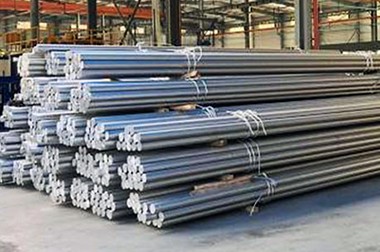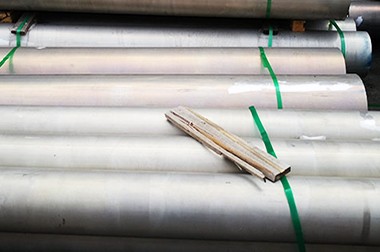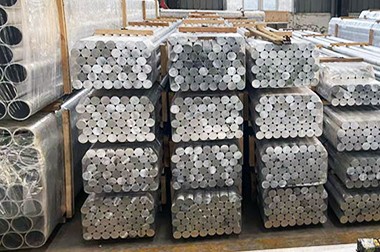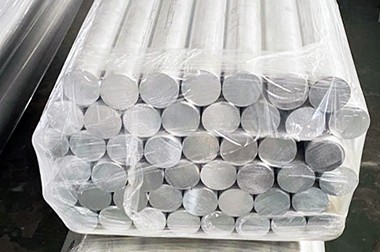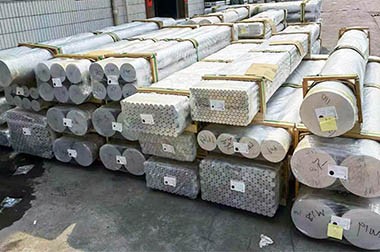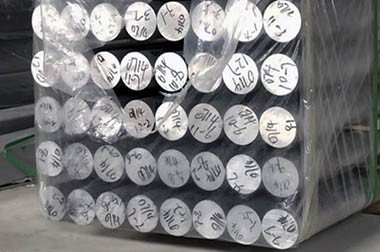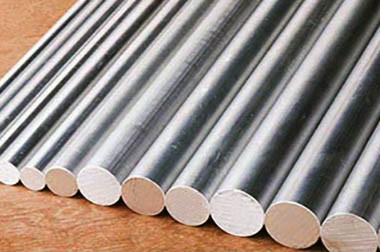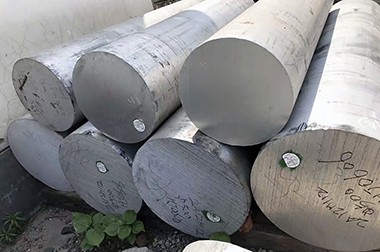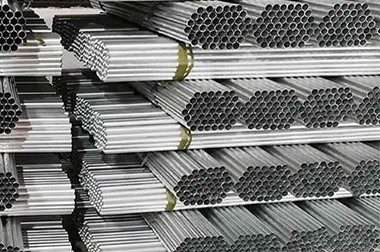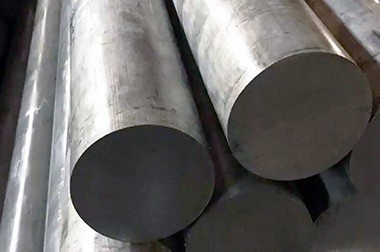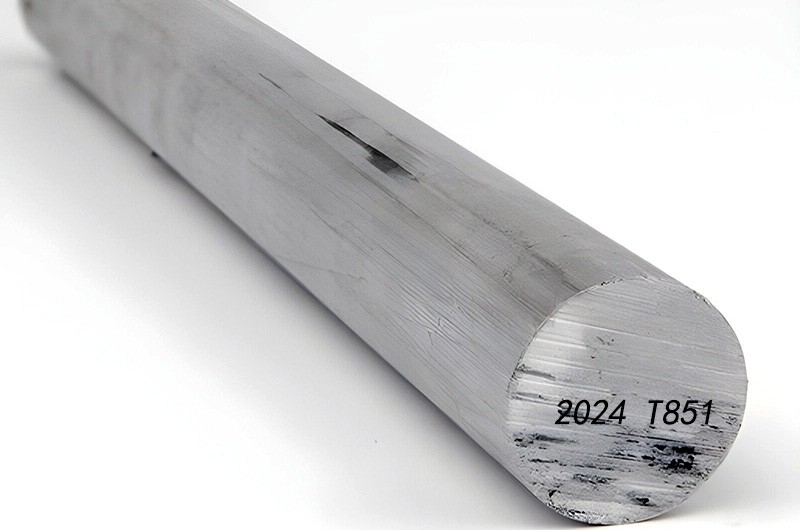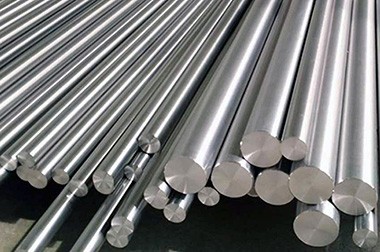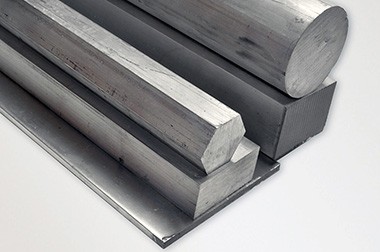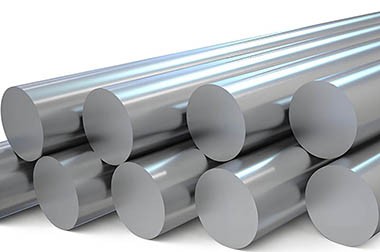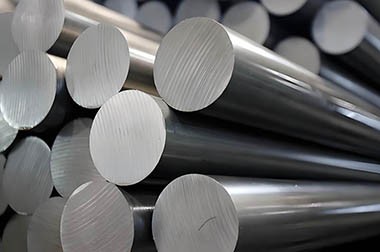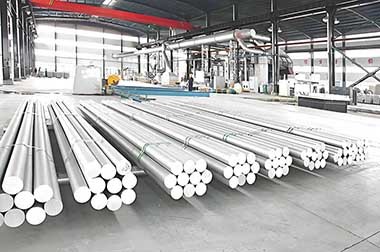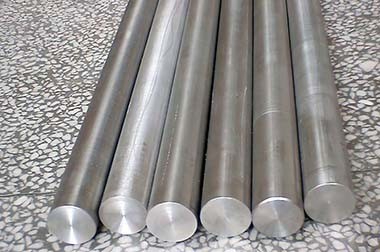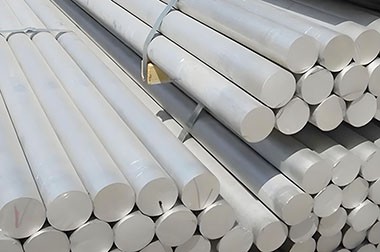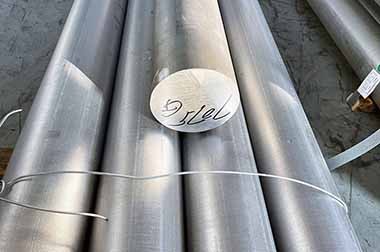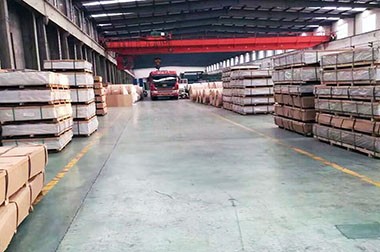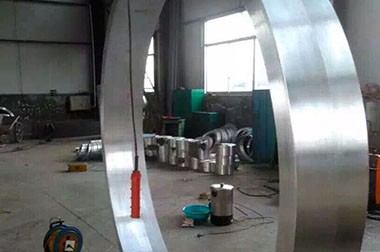2017 T4 T451 Aerospace Aluminum Bar Rod
The 2017 aerospace aluminum bar is an alloy based on aluminum, with copper as the main alloying element, belonging to the aluminum-copper family of hard aluminum alloys. Due to its high strength and good machinability, it is widely used in the aerospace industry and other fields requiring high-strength materials.
2017 aluminum belongs to the 2000 series aluminum alloy (commonly known as hard aluminum), with copper as the main alloying element. This gives the alloy excellent strength and fatigue resistance, making it a popular choice for high-performance applications such as aerospace components, military equipment, and various structural parts.
Haomei Aluminum 2017 aluminum bar complies with ASTM B211 (bar, rod), AMS 4120 (aerospace material), and other specifications. Haomei Aluminum 2017 aluminum bar is sourced directly from manufacturers, ensuring competitive pricing.

2017 Aerospace Aluminum Bar Rod Features
- 1. High Strength: The 2017 aluminum alloy has excellent strength, making it suitable for applications that require high load-bearing capacity.
- 2. Good Corrosion Resistance: Although the corrosion resistance of 2017 is slightly inferior compared to other aluminum alloys, it can still effectively resist corrosion when properly coated.
- 3. Good Machinability: It can be processed through various methods (such as cutting and welding), but care should be taken regarding the effects of heat treatment.
Specs of 2017A T4 T451 aluminum bar rod
| Alloy | 2017A |
| Temper | T4, T451 |
| 2017 Extruded aluminum rod diameter | 3.0-420mm |
| 2017 Cold finish aluminum rod diameter | 3.0-350mm |
| 2017 aluminum Square bar size | 10×10mm-150×150mm |
| 2017 aluminum flat bar size | Customized according to customer requirements |
| 2017 aluminum Hexagonal rods size | Customized according to customer requirements |
| Length | 1-6m, Random, Fixed; Cut Length or as per clients’ requirement |
| Standard | ASTM B211-03, AMS 4118 2017-T4/T451 aluminum bar, MIL-STD-1295, ISO 209-1:2007 |
| Surface Treatment | Cladding, Painting, Oxidation |
2017 Aluminum Bar Corrosion Resistance is Relatively Poor
The corrosion resistance of the 2017 aluminum bar is relatively poor in its natural state. The main reason is the addition of copper (Cu content 3.5%-4.5%), which makes the alloy prone to electrochemical corrosion in humid or corrosive environments. Compared with other aluminum alloys (such as the 5xxx or 6xxx series), the 2017 aluminum bar relies more on surface treatment or protective cladding to enhance its corrosion resistance.

2017 Aluminum Bar Sensitivity to High-Temperature Environments
When the temperature exceeds 100℃, the 2017 aluminum bar may develop intergranular corrosion tendencies. This is especially true when the material is not clad or surface-treated, as the grain boundaries inside the material are prone to oxidation and corrosion damage. Therefore, in high-temperature applications, usage conditions must be strictly controlled, or protective measures should be adopted.
Haomei 2017 Aluminum Bar Supply Forms
Standard: ASTM B211 (bar, rod), AMS 4120 (aerospace material).
Rolled surface or customized coatings.
2017 aluminum is available in various forms, including round, square, hexagonal, and flat bars. This versatility makes it suitable for structural and precision machining applications.
2017 T4 Aluminum Rod
Description: The 2017 T4 aluminum rod is a heat-treated alloy that offers good machinability and high strength. The T4 temper indicates that the aluminum has been solution heat-treated and naturally aged to achieve a specific strength and hardness. This rod is often used in applications where good corrosion resistance and high strength-to-weight ratio are required, such as in aerospace components.
2017 T451 Aluminum Rod
Description: The 2017 T451 aluminum rod is a variation of the T4 temper, but with additional processing. The "T451" designation indicates that the rod has been solution heat-treated and then artificially aged to enhance its mechanical properties. This results in improved strength and hardness compared to the T4 temper. The T451 rods are commonly used in structural applications and components that require enhanced mechanical performance.
2017 T6 Aluminum Rod
Description: The 2017 T6 aluminum rod is another heat-treated variant, where the "T6" temper signifies that the material has been solution heat-treated and artificially aged. This process results in the highest strength and excellent mechanical properties among the 2017 series. T6 rods are widely used in demanding applications, including aerospace, automotive, and military due to their high strength and good machinability.
2017 Aluminum Round Bars
Description: 2017 aluminum round bars are cylindrical bars made from the 2017 aluminum alloy. These bars can be produced in various diameters and lengths, making them versatile for different applications. They are known for their excellent machinability, high strength, and are often used in manufacturing parts that require precision machining.
2017 Aluminum Hexagonal Rod
Description: 2017 aluminum hexagonal rods are rods with a hexagonal cross-section, providing unique design opportunities for applications that require specific shapes. They maintain the high strength and machinability properties of the 2017 alloy, making them suitable for custom fittings, fasteners, and structural components.
2017 Cold Drawn Aluminum Bar Rod
Description: Cold drawn aluminum bar rods made from the 2017 alloy undergo a cold drawing process, which results in improved surface finish, tighter tolerances, and enhanced mechanical properties. This process involves pulling the rod through a die at room temperature, which increases strength and hardness. Cold drawn rods are often used in precision applications where dimensional accuracy and surface quality are critical.
2017 Aluminum Square Bar
Description: 2017 aluminum square bars are solid bars with a square cross-section, offering good machinability and high strength. These bars are used in a variety of applications, including construction, automotive, and aerospace, where structural integrity and weight savings are important. They can be easily cut, drilled, or machined to suit specific requirements.
Heat Treatment and Strengthening of 2017 Aerospace Aluminum Bar Rod
The 2017 aluminum alloy can be strengthened through heat treatment, with common methods including solution treatment and aging treatment.
The 2017 aluminum alloy can be strengthened through heat treatment, typically employing solution treatment and aging to enhance its mechanical properties. By precisely controlling the heat treatment process, an optimal combination of strength and toughness can be achieved.
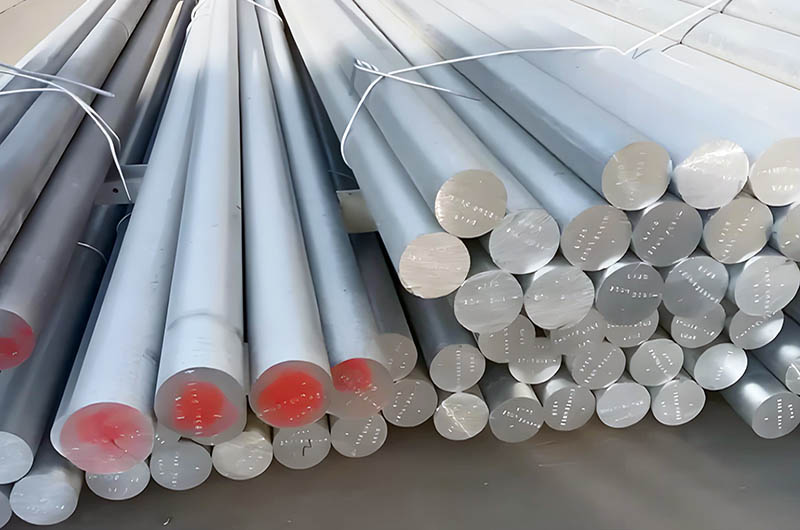
Machinability of 2017 Aluminum Bar Rod
- Weldability: The weldability of 2017 aluminum alloy is poor, particularly in fusion welding, which can easily lead to cracking. Therefore, special welding techniques are usually required when welding is necessary.
- Machinability: Excellent, making it very suitable for parts that require precision machining.
- Formability: Both hot and cold forming performance are good, but precautions should be taken to prevent cracking during cold forming.
Chemical composition of 2017A Aluminum Alloy
| 2017 Alloy % | |
| Si | 0.20-0.80 |
| Fe | 0.70 |
| Cu | 3.5-4.50 |
| Mn | 0.40-1.00 |
| Mg | 0.40-1.00 |
| Cr | 0.10 |
| Ni | - |
| Zn | 0.25 |
| Ti+Zr | 0.25 |
| Al | Remainder |
Mechanical property of 2017A T4 T451 aluminum bar rod
| Physical Property | 2017A T4 | 2017A T451 |
| Tension Strength(MPa) | 517 | 621 |
| Yield Strength(MPa) | 324 | 572 |
| Elongation(%) | 12 | 8 |
| Hardness(HB) | 155-200 | 170-235 |
Advantages and Limitations of 2017 Aluminum Bar
Main advantages of 2017 aluminum bar: High strength-to-weight ratio, excellent machinability.
- High strength-to-weight ratio: Provides significant strength while maintaining a lightweight component.
- Good fatigue resistance: Can withstand cyclic loads, ensuring long-term reliability.
- Excellent machinability: Enables precise machining of complex parts, which is particularly valuable in the aerospace and automotive industries.
Limitations of 2017 aluminum bar: Lower corrosion resistance; not recommended for welded structures.
- Reduced corrosion resistance: Although the copper content enhances strength, it also makes the alloy more susceptible to corrosion, often requiring protective coatings.
- Welding challenges: The alloy has poor weldability, meaning alternative joining methods such as riveting or specialized welding techniques are typically required.
Applications of 2017 Aerospace Aluminum Bar Rod
The 2017 aluminum bar is widely used in the aerospace field due to its high strength and good machinability, particularly in structural components of aircraft and aerospace vehicles. Below are detailed descriptions of specific applications of the 2017 aluminum bar in aviation:
1. Aircraft Structural Components
The 2017 aluminum bar is typically used to manufacture frame structures of aircraft, such as fuselage, wing beams, and wing frames. Since aircraft must withstand extremely high stresses and impacts, the high-strength characteristics of the 2017 aluminum bar make it an ideal material.
- Wing Components: Wings need to remain lightweight while possessing high strength to withstand aerodynamic stresses during flight. The 2017 aluminum bar can be used for internal reinforcements and support structures within the wings.
- Fuselage Frame: The fuselage frame of the aircraft bears the weight and loads of the entire structure. The high strength and low weight of the 2017 aluminum bar help improve flight efficiency while ensuring the fuselage's sturdiness and reliability.
2. Fasteners
High-strength fasteners (such as bolts, nuts, and rivets) are essential in aircraft manufacturing, and the 2017 aluminum bar is suitable for producing these components. Its high tensile strength allows it to remain stable in high-stress environments, while its relatively low weight is crucial for aircraft weight reduction and durability.
- Bolts and Screws: The bolts and screws used to connect different structural components of an aircraft are typically made from 2017 aluminum bars because they can maintain good shear strength and tensile strength.
- Rivets: Rivets made from 2017 aluminum bars have excellent fatigue resistance, ensuring the structure can withstand continuous vibrations and stresses during prolonged flights.
3. Engine Components
The 2017 aluminum bar is also used for some precision parts of aircraft engines, which require good machinability and durability. In high-temperature and high-pressure environments, the lightweight characteristics of aluminum alloys help reduce the overall weight of the engine and improve fuel efficiency.
- Engine Connectors: These parts require high precision and strength. The 2017 aluminum bar can achieve good performance through machining and heat treatment, making it suitable for manufacturing parts that connect different engine sections.
- Engine Control Components: Control valves, throttle bodies, and other components in aircraft engines have high requirements for weight and durability. The excellent properties of the 2017 aluminum bar meet these demands.
4. Aircraft Interiors and Seat Frames
In addition to load-bearing structures, the 2017 aluminum bar is also used to manufacture interior support frames and equipment mounting brackets for aircraft. The weight of these components needs to be minimized to reduce fuel consumption during flight while maintaining sufficient strength for safety.
- Seat Frames: The frames and securing devices of aircraft seats are typically made from 2017 aluminum bars, providing enough strength to support passengers' weight and impacts while remaining lightweight to reduce overall weight.
- Electronic Equipment Brackets: Mounting brackets for various electronic navigation and communication devices on aircraft require good dimensional stability and machining precision, making the 2017 aluminum bar suitable for such applications.
5. Landing Gear Components
The landing gear of an aircraft endures significant impact forces during takeoff and landing. While the main structure of the landing gear typically uses high-strength steel or titanium alloys, the 2017 aluminum bar is also used in some secondary support structures or connectors. Its high strength and low weight advantages help reduce the overall system weight, improving aircraft performance.
6. Fuel System Parts
Many components required in fuel systems, such as fuel valves and fuel pump housings, demand high strength, durability, and corrosion resistance. The high hardness and machinability of the 2017 aluminum alloy make it an ideal material for manufacturing these components.
7. Helicopter Parts
Some components in the rotor and transmission systems of helicopters also use the 2017 aluminum bar. These parts must maintain high to withstand the various stresstrength ses generated during helicopter flight. The 2017 aluminum alloy can be formed into the required precision shapes while retaining its strength.
Application Restrictions and Recommend ations for 2017 Aluminum Bar
| Application Restrictions | Recommendations |
| Suitable Scenarios | The 2017 aluminum bar should be prioritized for dry environments or short-term exposure applications, such as aerospace structural components and rivets. Regular maintenance is recommended to extend service life. |
| Avoid Long-Term Exposure | The 2017 aluminum bar should be used with caution in marine, chemical, or other highly corrosive environments. Composite protection methods, such as surface anodizing or coatings, should be applied to enhance corrosion resistance. |
Why Choose 2017 Aerospace Aluminum Bar?
- 1. High Strength-to-Weight Ratio: For aerospace applications, the strength-to-weight ratio of materials is critical. The 2017 aluminum bar has high strength and is much lighter than steel, helping to reduce the weight of the aircraft and improve fuel efficiency.
- 2. Good Machinability: The 2017 aluminum bar is easy to machine and form, making it suitable for manufacturing complex structures and parts that meet the precision manufacturing requirements of aircraft.
- 3. Excellent Fatigue Resistance: Aircraft components must withstand frequent stress variations over long-term use. The fatigue resistance of the 2017 aluminum bar is outstanding, making it suitable for parts that endure cyclical stress.
- 4. Good Heat Resistance and Thermal Conductivity: Although the corrosion resistance of 2017 aluminum alloy is average, its heat resistance and good thermal conductivity perform excellently in high-temperature components like aircraft engines.
Manufacturing and Processing of 2017 Aluminum Bar
- Machinability: Excellent; suitable for high-speed machining, commonly used for screws and fasteners.
- Welding: Poor weldability due to cracking tendency; better suited for riveting or adhesive bonding.
- Corrosion resistance: Low (due to copper content); requires coatings (anodizing, aluminum cladding, painting) to adapt to harsh environments.
- Heat treatment: Responds well to solution treatment and aging.
Considerations for Using 2017 Aluminum Bar
Methods to Enhance Corrosion Resistance of 2017 Aluminum Bar
- Aluminum Cladding Process: Covers the base material with a layer of pure aluminum to isolate it from external environments, significantly improving corrosion resistance.
- Anodizing: Forms a dense oxide film (such as Al₂O₃) to enhance corrosion resistance and improve appearance.
- Paint Protection: Suitable for non-high-temperature scenarios, preventing moisture and chemical media from directly contacting the material surface.
2017 Aluminum Bar is Suitable for High-Precision Machining Applications
Due to its excellent cutting performance, the 2017 aluminum bar is ideal for high-precision machining applications such as aerospace components, precision instrument parts, and automation equipment. These industries require materials with stable dimensional accuracy and outstanding machinability.
2017 Aluminum Bar Requires Special Considerations in Certain Environments
When using 2017 aluminum bar in special environments, corresponding measures should be taken based on specific conditions. For example, in high-temperature environments, the effect of its heat treatment state on strength should be considered. In high-humidity or chemically corrosive environments, protective coatings should be applied to ensure long-term stability and safety.
This alloy is an ideal choice for high-stress, precision-machined components in the aerospace and defense sectors, where performance is prioritized over corrosion resistance.

